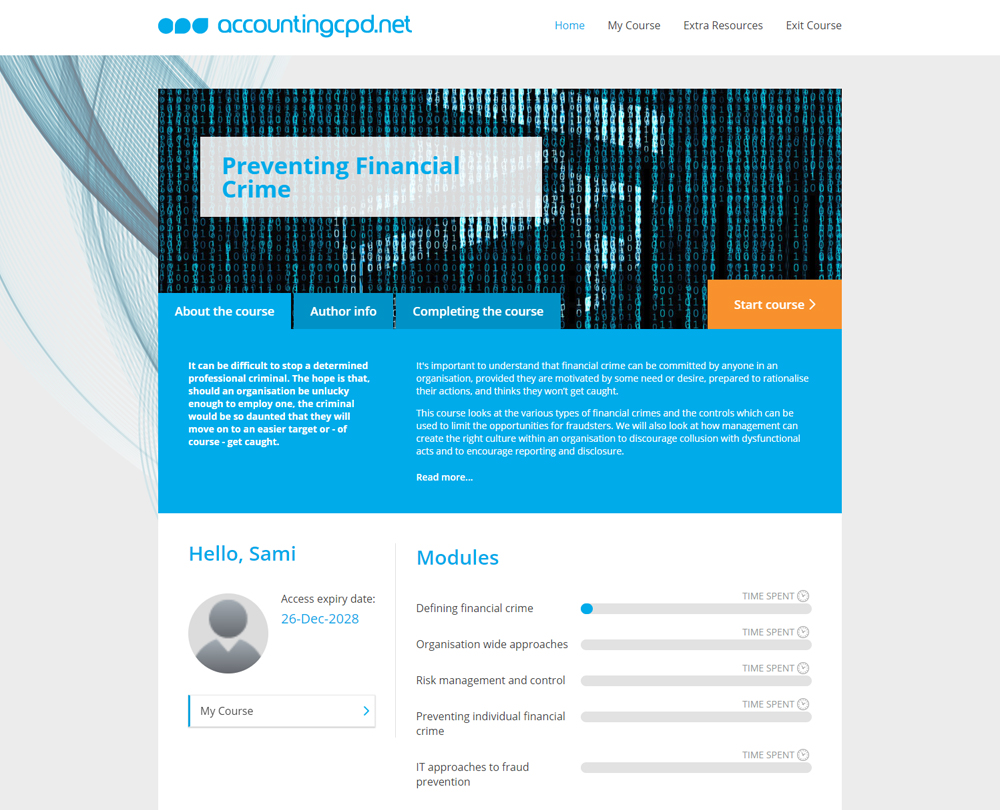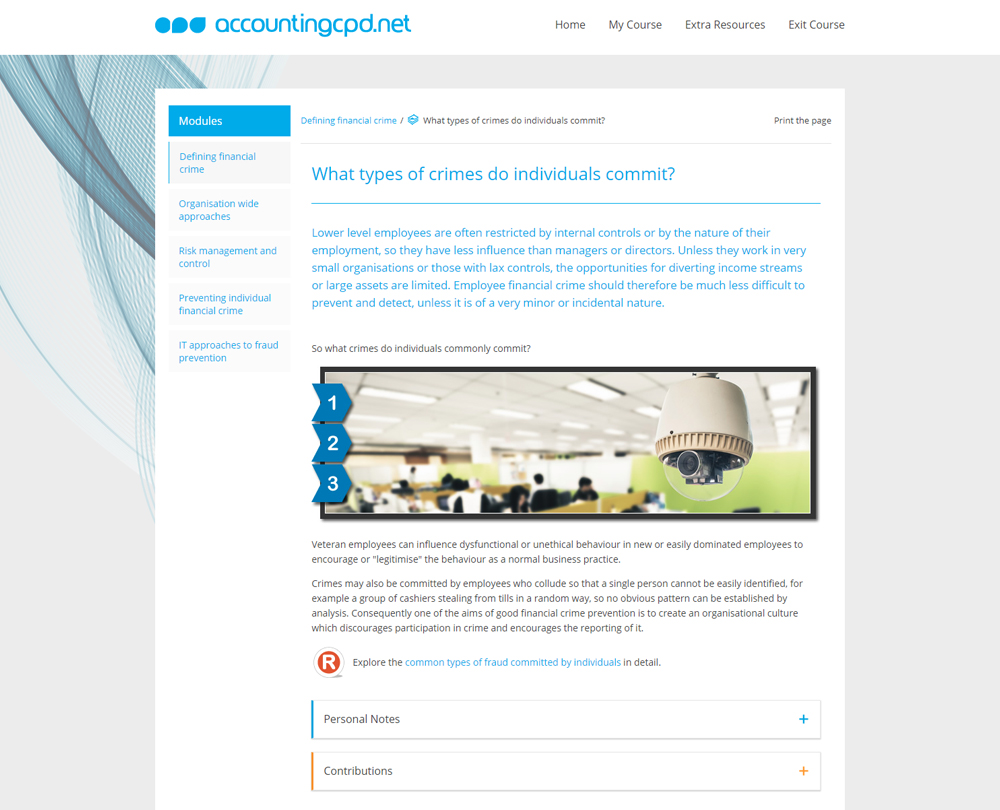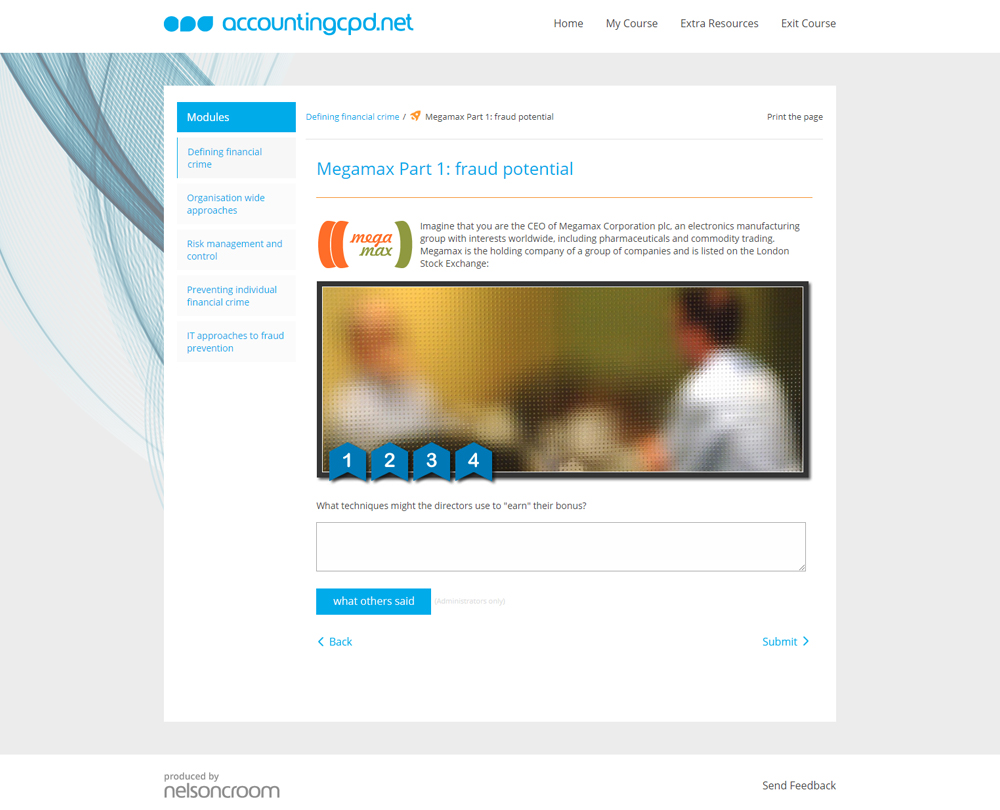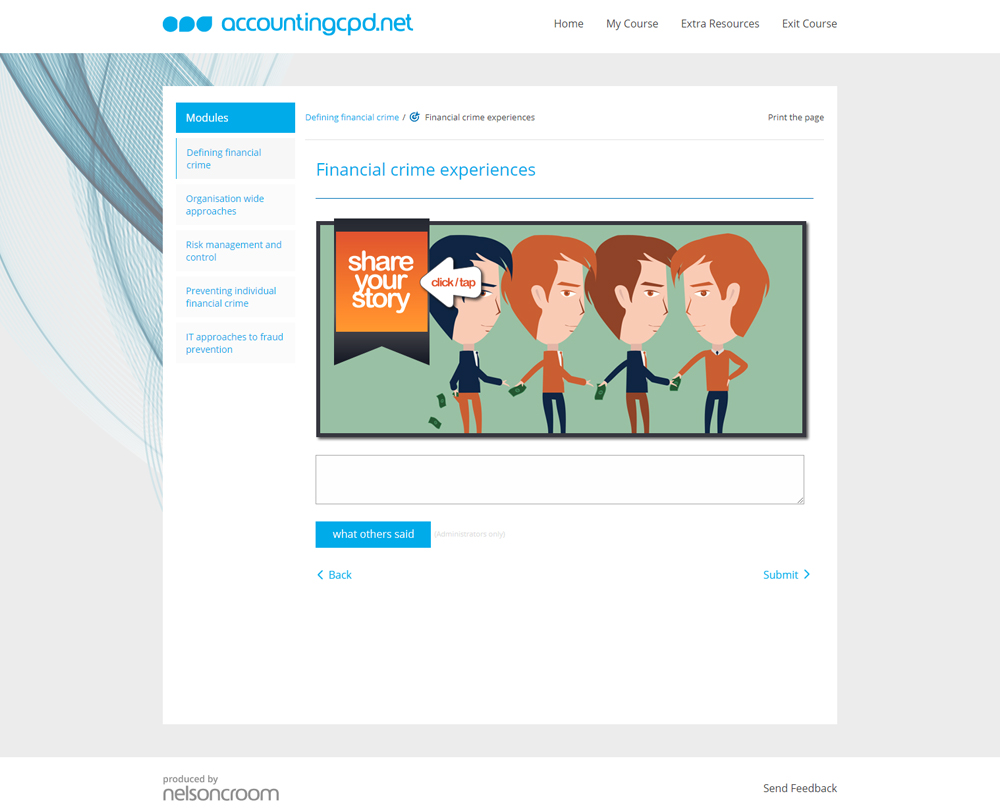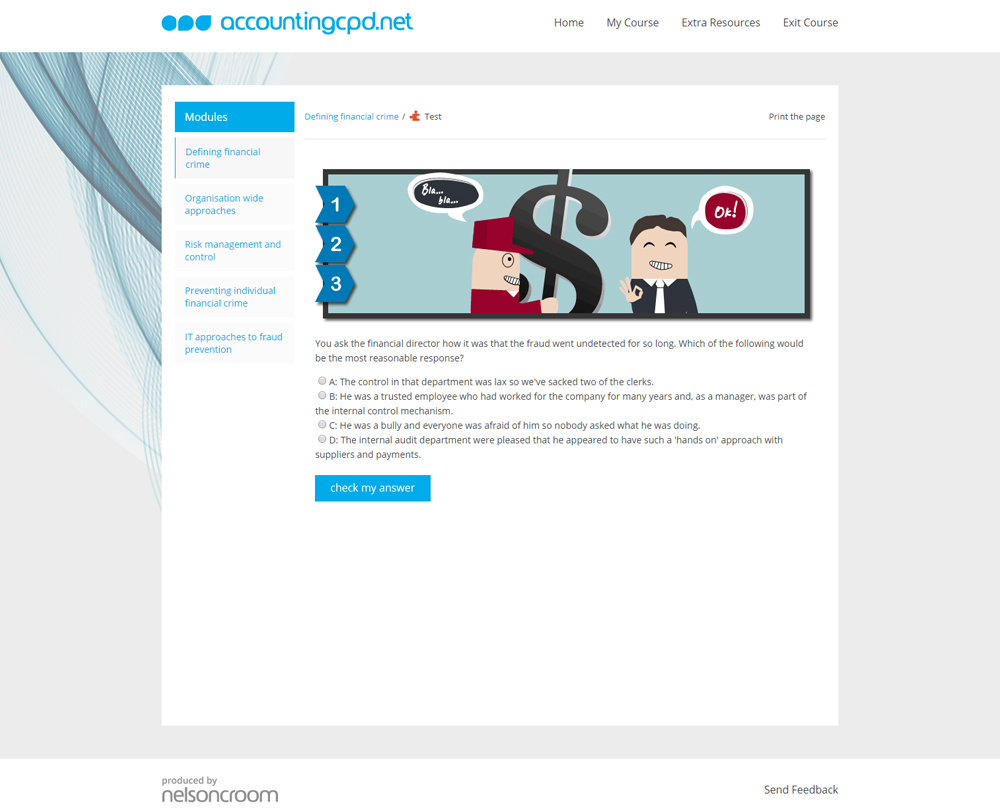Preventing Financial Crime
Understand the various types of financial crime and the controls that can be used to limit the opportunities for fraudsters to commit them. Look at how to create the right culture within an organisation to discourage collusion in fraud and encourage reporting and disclosure.
This course is not currently available
This course will enable you to
- Understand the range of financial crimes which can be committed, as well as the motives and profiles of those likely to commit them
- Gain comprehensive skills in risk management and improve your assessment of risk factors
- Identify how to properly approach and report financial crimes
- Know how to influence ethical behaviour and create the right kind of corporate culture
About the course
Financial crime can be committed by anyone in an organisation, who is motivated by some need or desire, prepared to rationalise their actions, and thinks they won’t get caught.
Preventing Financial Crime will enable you to understand the various types of financial crime and the controls that can be used to limit the opportunities for fraudsters to commit them. More importantly you will look at how to create the right culture within an organisation to not only discourage collusion in fraud but also to encourage reporting and disclosure.
Look inside
Contents
- Defining financial crime
- What is financial crime?
- What types of crimes do managers commit?
- What types of crimes do individuals commit?
- What does a financial criminal look like?
- What is money laundering?
- How prevalent is bribery and corruption?
- Organisation wide approaches
- How is financial crime perpetuated within organisations?
- How can we build defences?
- What is inherent risk?
- What is good corporate governance?
- What policies and procedures are needed?
- What is the role of audit?
- Risk management and control
- What is risk management?
- What approaches exist to risk management?
- What do good internal controls look like?
- What are CRSA and ERM?
- How should management respond to financial crime?
- Preventing individual financial crime
- Why do people commit crime?
- What aspects of accounting should we consider?
- What is the control environment?
- What internal controls should we consider?
- How do we monitor controls?
- IT approaches to fraud prevention
- How should we assess IT system risks?
- What are the specific approaches to protecting IT systems?
- What exactly is cloud computing?
- What are the formal approaches to risk management?
- What is forensic readiness?
How it works
Reviews
You might also like
Take a look at some of our bestselling courses
This course is not currently available. To find out more, please get in touch.

